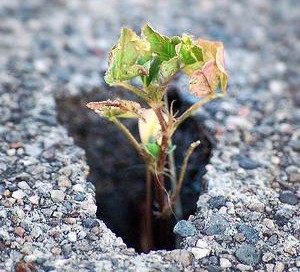The gas phase of the soil is represented by soil air, which occupies water-free voids in the soil. For the growth and development of cultivated plants requires a normal gas exchange between the soil and the atmosphere. The soil continuously absorbs oxygen during the heat season and releases carbon dioxide. The main consumers of oxygen in the soil are plant roots, aerobic microorganisms, soil fauna, and a small part of it is spent on purely chemical processes. The source of oxygen is atmospheric air, which enters the soil air diffusely with precipitation and irrigation water. Oxygen is involved in the acts of respiration of plants and in its absence the plants die. In addition, with a lack of oxygen in the soil, anaerobic processes develop that dramatically worsen the agronomic properties of the soil, the growth and development of plants.
The high content of C0 2 in the soil has a negative effect on seed germination and respiration of the roots. However, carbon dioxide is necessary for photosynthesis of plants. The optimum content of carbon dioxide in the soil air ranges from tenths of a percent to 1 … 2%. The content and composition of soil air depends on air consumption and gas exchange.
Air tightness is the ability of a soil to contain a certain amount of air. The air content is expressed as a percentage of the soil volume. Air consumption depends on the porosity and soil moisture. The greater the porosity, the higher the air capacity. With an increase in soil moisture, air consumption decreases, and with full saturation of all pores with water, only dissolved air is present. The air intensity depends on the particle size distribution and soil structure. In structural soils, large pores are occupied by air. Little air in unstructured soils. If the air intensity exceeds 15% of the soil volume, then the soil aeration is considered normal.
Breathability And The Importance of Soil Air
The ability of soil to pass air through itself. It depends on the particle size distribution, soil structure and pore volume between the aggregates. The more breathability, the better gas exchange and the higher the oxygen content in the soil air. The soil and air atmospheric exchange occurs under the action of wind, diffusion, changes in temperature and pressure, and also as a result of changes in the amount of moisture in the soil during precipitation, irrigation and evaporation.
The soil air regime includes all processes of air entry into the soil, movements, changes in the composition and gas exchange of soil air with atmospheric. Improve the air regime with the help of agrotechnical and land reclamation activities. Land reclamation measures are used on swampy and marshy soils that need to drain excess water using open or closed drainage. Of great importance in the creation of normal air exchange are such agrotechnical measures as the destruction of the soil crust and the maintenance of the soil surface in a friable state. All processing techniques that increase the porosity of the soil, increase gas exchange, reduce the concentration of carbon dioxide and increase the oxygen content in the soil
